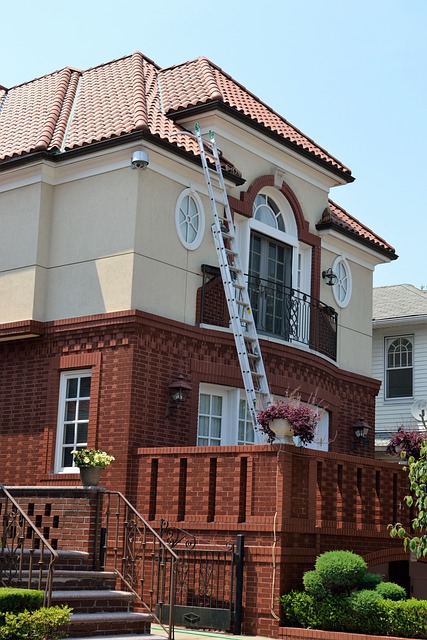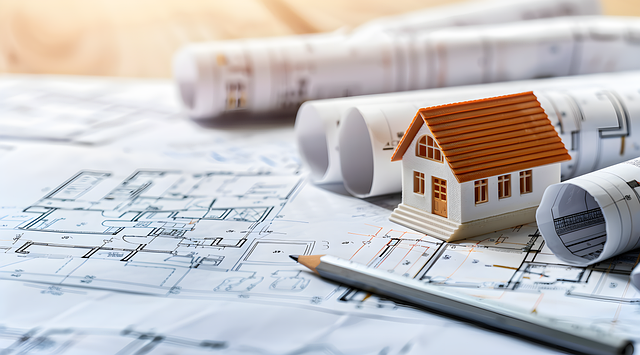Avoiding Renovator Mistakes: Verify Licenses for Safe Projects

TL;DR: Before hiring any contractor for renovations, thoroughly vet their licenses to avoid subpar w…….
Introduction
Home improvement projects are undertaken with the goal of enhancing the functionality, aesthetics, and value of a home. However, without careful planning and professional guidance, these projects can lead to costly mistakes that not only impact the homeowner’s wallet but also the overall livability and market value of their property. This comprehensive article delves into the common pitfalls encountered in home improvement endeavors, offering insights, analysis, and examples to guide homeowners through the process with greater awareness and strategic planning. By understanding these mistakes, you can avoid them and ensure your home improvement projects are successful and beneficial in the long term.
Understanding Common Home Improvement Mistakes
Common home improvement mistakes encompass a range of errors from poor planning and design choices to substandard materials and inadequate contractor selection. These missteps can often be traced back to a lack of knowledge, improper allocation of resources, or an underestimation of the project’s scope. Historically, as homes have evolved to meet changing family dynamics, technological advancements, and aesthetic preferences, certain mistakes have become more prevalent. Recognizing these core components—improper planning, overspending, selecting inferior materials, or inadequate renovation skills—is crucial for anyone looking to undertake a home improvement project.
Global Impact and Trends
The impact of common home improvement mistakes is not confined to individual homes but extends globally, influencing architectural trends, real estate markets, and even environmental sustainability. Different regions face distinct challenges, from the high-density urban renovations of North America and Europe to the resource management issues in rapidly developing countries like China and India. Global trends indicate a growing emphasis on eco-friendly materials and energy-efficient designs, reflecting a shift towards sustainability and a recognition of the environmental impact of construction and renovation activities.
Economic Considerations
Economically, home improvement projects can be significant investments. Market dynamics play a pivotal role in determining the cost, availability of materials, and labor. Investment patterns are influenced by economic conditions, with certain improvements offering better returns than others. Common home improvement mistakes often lead to overspending or choosing less durable options that may seem economical initially but result in higher long-term costs. Understanding the economic implications of these choices is essential for making informed decisions that balance immediate needs with future financial considerations.
Technological Advancements
Technology has revolutionized home improvement, offering innovative solutions that range from smart home systems to advanced insulation materials. These advancements aim to enhance energy efficiency, security, and convenience. However, the rapid pace of technological change can lead to mistakes such as investing in unproven technologies or installing systems that may quickly become obsolete. Staying abreast of these advancements and assessing their practicality and longevity is crucial for homeowners looking to incorporate technology into their renovation projects.
Policy and Regulation
Home improvement projects are governed by a complex web of policies, regulations, and legislative frameworks that vary by jurisdiction. These governances are in place to ensure safety, quality standards, and compliance with environmental regulations. Common home improvement mistakes often stem from a lack of understanding or adherence to these guidelines. By staying informed about the relevant policies and ensuring compliance, homeowners can avoid legal issues and costly revisions that result from non-compliance.
Challenges and Criticisms
The field of home improvement is not without its challenges and criticisms. Homeowners frequently face issues such as project mismanagement, poor craftsmanship, and unexpected costs. Critics argue that the industry lacks standardized training and certification for contractors, leading to a variety of subpar outcomes. To overcome these issues, it is essential to conduct thorough research, engage reputable professionals, and maintain clear communication throughout the project lifecycle.
Case Studies
Examining successful home improvement projects provides valuable lessons that can inform future renovations. Case studies highlight the importance of careful planning, budgeting, and design. From a kitchen remodel that increased property value to a basement renovation that maximized space functionality, these real-world examples demonstrate the potential for positive outcomes when common mistakes are avoided.
Future Prospects
The future of home improvement is poised for continued innovation and growth. Emerging trends include a greater emphasis on personalization, health and wellness features, and smart technology integration. Strategic considerations must take into account environmental sustainability, demographic shifts, and economic stability to ensure the longevity and success of future home improvement projects.
Conclusion
In conclusion, common home improvement mistakes are prevalent but avoidable with the right knowledge, planning, and professional guidance. By understanding these pitfalls and incorporating best practices into your renovation plans, you can transform your living space into a functional, beautiful, and valuable asset. The insights presented in this article serve as a guide to navigate the complexities of home improvement, ensuring that your projects lead to positive outcomes and enhance the overall quality of your home.
FAQ Section
Q: What are the most common mistakes made in home improvement projects?
A: The most common mistakes include underestimating project costs, choosing poor-quality materials, lack of proper planning, improper permits and legal compliance, and failing to consider future needs.
Q: How can I avoid making costly mistakes during a home renovation?
A: To avoid costly mistakes, conduct thorough research, set a realistic budget, hire qualified professionals, obtain the necessary permits, and plan for potential changes in your family’s needs over time.
Q: What role do new technologies play in home improvement?
A: New technologies can significantly enhance energy efficiency, security, and convenience. However, it is important to assess their practicality and longevity before incorporating them into your renovation plans.
Q: How do economic factors influence home improvement decisions?
A: Economic factors such as market trends, interest rates, and the overall state of the economy can impact the cost, availability, and return on investment for various home improvements.
Q: Why is it important to comply with local regulations during a home renovation?
A: Compliance with local regulations ensures that your renovation meets safety, quality, and environmental standards, avoids legal issues, and can prevent costly revisions or delays in project completion.

TL;DR: Before hiring any contractor for renovations, thoroughly vet their licenses to avoid subpar w…….

The allure of DIY home improvements promises creative control and cost savings but often leads to bu…….

Renovation success requires careful planning and professional guidance to avoid costly remodeling pi…….

Underestimating scope, time, and ignoring permit requirements are leading causes of renovation proje…….

Home renovation projects often encounter hidden costs like labor expenses and permit fees, structura…….

DIY enthusiasts and contractors often encounter budget overruns due to optimistic planning, unforese…….

Hiring unlicensed contractors can lead to legal and financial issues for homeowners due to potential…….

Hiring unlicensed contractors for DIY projects poses significant risks, including subpar work, finan…….

Prioritizing quality materials over cheap alternatives is crucial for DIY projects to avoid future r…….

First-time home improvers must understand common remodeling pitfalls like overspending on features,…….